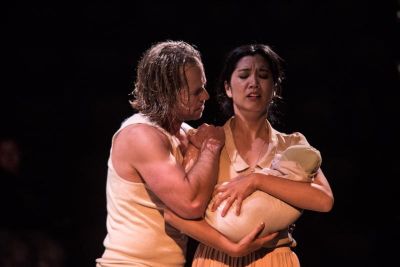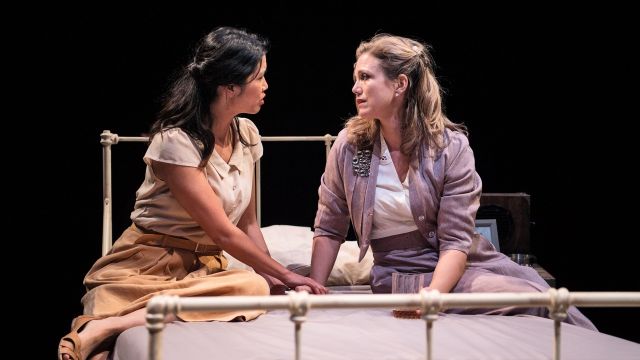A Streetcar Named Desire
Theatre directors around the world continually look for new ways to interpret the classics and Tennessee Williams’s work is no exception. Over the years his Pulitzer-prize winning A Streetcar Named Desire has been pushed and pulled through all sorts of configurations; from being performed by an all black cast, a multi-racial cast, to drag troupes and even The Simpsons. Every major actress at some time in their career has had a stab at Blanche DuBoise, one of the theatre’s greatest tragic characters. But throughout it all the poetry and lyricism of Williams’s play always shines through. The portrait of a faded neurotic Southern belle who is brutalised by her macho uncouth, brother-in-law, is indestructible.
I’m happy to report that La Boite’s new production by artistic director Todd McDonald delivers satisfying performances all around. Bridie Carter, best known for her portrayal of Tess Silverman McLeod in McLeod’s Daughters, is impressive in her Brisbane debut, bringing all of Blanche’s massive emotional baggage to the party. No fluttering moth, she cajoled, she whined, she played the kittenish feline with knowing intent, and seduced using all the predatory charm in her arsenal. When she thought she was about to be raped by Mitch (Colin Smith) her ear-piercing cry of “fire” was explosive, but her build to Blanche’s final humiliation with Stanley (Travis McMahon) when he actually does rape her, was shattering. It was a memorable performance.
 So was Travis McMahon in the role made famous by Marlon Brando, a beer-swilling, working-class man, who was prone to fits of rage. McMahon also showed the softer and more tender side of the character with honesty.
So was Travis McMahon in the role made famous by Marlon Brando, a beer-swilling, working-class man, who was prone to fits of rage. McMahon also showed the softer and more tender side of the character with honesty.
Blanche’s sister, Stella, was played by young actress Ngoc Phan, who gave a very convincing performance of the role. The two are obviously not related but Phan captured the strength of the bond between sisters very well. Colin Smith as Blanche’s enamoured and later disgusted suitor, found a nice mix of sympathy and anger in a vulnerable man.
Scandinavian designer Vilma Mattila’s set, essentially two steeply-raked playing areas, did not evoke New Orleans, but her costumes, especially for Blanche, had a look of appropriate gentility. Ben Hughes’s moody lighting was a plus, but the use of a live band and vocals that began, closed, and was used for scene-change music detracted more than enhanced the production.
Peter Pinne
Photographer: Dylan Evans
Subscribe to our E-Newsletter, buy our latest print edition or find a Performing Arts book at Book Nook.

